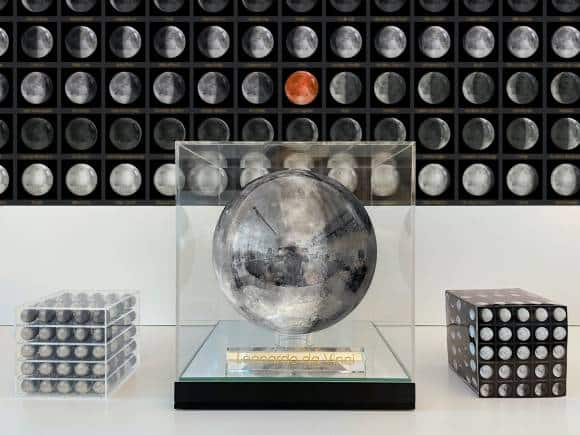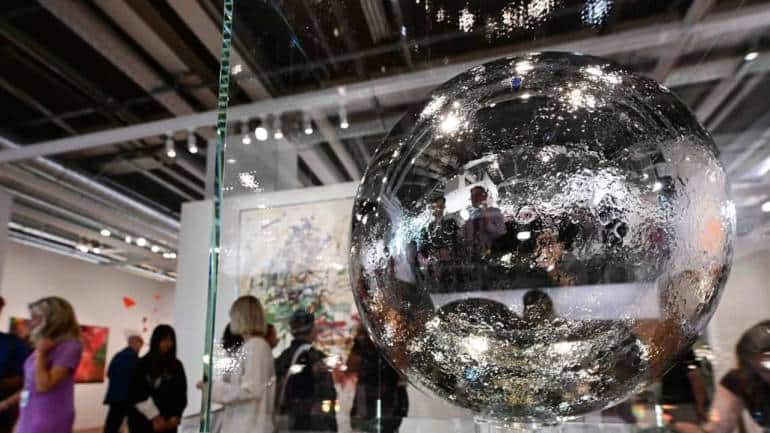My Account
Follow us on:
Powered By ![]()
Discover 5000+ schemes. Track your portfolio 24X7
Invest Now
MC30 is a curated basket of 30 investment-worthy
mutual Fund (MF) schemes.
Invest Now
Powered By ![]()
The new age digital currency to diversify a portfolio.
Invest Now
Visit this section to access live price and charts.
Invest Now
Learn and stay informed about cryptocurrency in India.
Learn More
Powered By
Learn, discover & invest in smallcases across different types to build your long term portfolio.
Invest Now
Explore from India`s leading investment managers and advisors curating their strategies as smallcases.
Invest Now
Powered By ![]()
Diversify your portfolio by investing in Global brands.
Invest Now
Pre-configured baskets of stocks & ETFs that you can invest
in with a single click. Developed by hedge funds, global
asset management companies, experienced wealth
management firms and portfolio managers.
Invest Now![]()
AMBAREESH BALIGA
Fundamental, Stock Ideas, Multibaggers & Insights
Subscribe
CK NARAYAN
Stock & Index F&O Trading Calls & Market Analysis
Subscribe
SUDARSHAN SUKHANI
Technical Call, Trading Calls & Insights
Subscribe
T GNANASEKAR
Commodity Trading Calls & Market Analysis
Subscribe
MECKLAI FINANCIALS
Currency Derivatives Trading Calls & Insights
Subscribe
SHUBHAM AGARWAL
Options Trading Advice and Market Analysis
Subscribe
MARKET SMITH INDIA
Model portfolios, Investment Ideas, Guru Screens and Much More
Subscribe
TraderSmith
Proprietary system driven Rule Based Trading calls
Subscribe![]()
![]()
Curated markets data, exclusive trading recommendations, Independent equity analysis & actionable investment ideas
Subscribe
Curated markets data, exclusive trading recommendations, Independent equity analysis & actionable investment ideas
Explore
STOCK REPORTS BY THOMSON REUTERS
Details stock report and investment recommendation
Subscribe
POWER YOUR TRADE
Technical and Commodity Calls
Subscribe
INVESTMENT WATCH
Set price, volume and news alerts
Subscribe
At 67, Jeff Koons, the most saleable and formidably marketing-driven American artist, is looking up at the moon, with Elon Musk tethering him on the upshot journey. Musk’s company SpaceX will send Jeff Koons: Moon Phases, 125 miniature moon sculptures into space, each around one inch in diameter, which will remain on the moon permanently.
Marking 50 years since America’s first crewed trip to the moon (in 1969), the ambition and money involved in the project is staggering in scale and scope. The project will have several parts, not all of which are yet complete, and they will depict various phases of the moon, half as seen from the Earth, half from different vantage points in space, and a lunar eclipse—displayed together in space in a sustainably-built, fully transparent, compartmentalised cube.
Each work will be named after a person the artist admires, those who have, in the artist’s own words in the press release that was released in the last week of June, “made accomplishments that are aspirational for our society”: Marcel Duchamp, Elvis Presley, Marilyn Monroe and Leonardo da Vinci are a few of the names. The artworks will “explore the imagination and technological innovation of the human race,” the press release further said.
Koons, who dominates much of the conversation around pop culture and art in America, is a neo-pop god—in language and approach, a direct descendant of French artist Marcel Duchamp and American artistic phenomenon Andy Warhol. This year, Koons takes a step into two areas for the first time: the Metaverse and the moon.
Each moon-bound sculpture will be accompanied by another large, spherical, stainless-steel sculpture encased in glass that will stay on the Earth, along with an NFT that corresponds with the sculptures on the Moon and the Earth. The sculptures to remain on Earth will feature a reflective surface—similar to Koons’ iconic sculpture Rabbit—mimicking the colours on the moon’s surface and a tiny precious stone, either a ruby, emerald, sapphire, or diamond, which will indicate the location of the landing on the moon.
Each digital artwork will reveal an image of the sculpture installed on the moon’s surface, along with “Jeff Koons’s iconic signature” and “other images,” says the release. The NFTs will be presented by Pace Verso in partnership with the project’s initiators, Patrick Colangelo of NFMoon and Chantelle Baier of 4Space. The release adds that proceeds from one of the first NFT sales will be donated to Doctors Without Borders/Médecins Sans Frontières (MSF) in support of the organisation’s medical humanitarian aid programs.
Koons said, of his most ambitious work so far: “I wanted to create a historically meaningful NFT project rooted in humanistic and philosophical thought. Our achievements in space represent the limitless potential of humanity. Space explorations have given us a perspective of our ability to transcend worldly constraints. These ideas are central to my NFT project, which can be understood as a continuation and celebration of humanity’s aspirational accomplishments within and beyond our own planet.”
If this ambitious futuristic enterprise takes off, scheduled to blast off by the end of the year, this would be the highest an artistic vision—and indeed the artistic ego that fuels it—would go in human history. It is likely going to have huge repercussions in the way technology can transform and propel artistic ideas, and probably change the way human beings view and consume art. One of the ironies of early modern art is that in trying to break down the traditional barriers between artist and viewer, embracing everyday objects, aspirational consumer products and objects of mass entertainment in sculpture and paintings—and, by extension, between art and life—many artists such as Andrew Warhol, the British sensation of the 1990s Damien Hirst, India’s Subodh Gupta to some extent, and others have alienated a large part of the public. These artists do not really yearn to reach a mass audience—far from it. Most of them smugly accept the role of exclusivity and feting that the art establishment assign them.
But the desire to involve spectators capable of responding to their art can’t be ignored in their journeys. And triumphantly enough, neo-pop gods like Koons represent the impulse antithetical to the rarefied realm of the art gallery, and from adhering to or reacting to artistic pantheons and schools that have informed much of artistic expression in the last two centuries.
Koons is a guy for whom more is always more—after all, his artistic ego is big enough to attempt outer space posterity—but he also is about the freedom to do what he wants to do. Artistic autonomy and a vision of what is art, instead of formalist concerns like how to create art, are his abiding motives—besides the millions of dollars that all his art fetches. All his works, taken together, all put together painstakingly with the labour of thousands of workers, can be seen as a kind of hyper-expressed scorn for rigid artistic structures of thinking, imagining and visualising.
Recently, Jeff Koons ’ sculpture Balloon Monkey (Magenta), fetched £10.1 million (£10,136,500) at a Christie’s auction in London. Created in 2006-13, it is the largest and the final piece in the artist’s celebrated series of balloon animals. Measuring 150 x 126 x 235 inches, the mirror-polished stainless steel sculpture was exhibited until July 3 in St James’s Square, adjacent to Christie’s headquarters in London. Jeff Koons’ sculpture ‘Balloon Monkey’ (Magenta).
Jeff Koons’ sculpture ‘Balloon Monkey’ (Magenta).
Koons is a New Yorker born in Pennsylvania, influenced deeply by Duchamp and Warhol. In 1960s’ New York, Warhol consciously subverted traditional ideas of skill and craftsmanship as a way of personal expression. He adopted mechanical tools of the film camera and reels and silkscreen painting which helped his motive of embracing and glorifying the imperfections of ordinariness. “If you want to know all about Andy Warhol, look at the surface of my paintings and films, there I am. There’s nothing behind it,” the greatest phenom-artist of his time famously said.
With the mind-boggling ways in which technology can alter reality today, Koons is in an extremely advantageous position, given the same impulses that Warhol had in the 1960s and the fame, agency and wealth that Koons already has extravagant amounts of. His art is with the world’s most elite collectors, museum collections and public spaces. Like Warhol, he has declared his anti-esoteric, anti-critical enquiry mandate unequivocally: “Whatever you respond to is perfect, that your history and your own cultural background are perfect,” he has famously said.
Another statement Koons has repeatedly made: “If you are critical, you are already out of the game.” He admired Michael Jackson—and made a work titled Bubbles in 1988 as an homage to the king of pop, a sculpture in which Jackson sits alongside a monkey, made in gilded porcelain—because he did “absolutely anything to be able to communicate with people,” which, he explained, must include all of Jackson’s cosmetic surgeries. It is a conscious shutting off from prevalent politics and social currents of any age for the sake of personal creative autonomy.
The years in which Koons burst on to the New York scene, the late 1970s, was a time when the term “postmodern” entered the vocabulary of art critics. The civil rights, feminist and gay rights movements of the 1960s and 1970s had their lingering effects, also building up to the yuppie Wall Street culture of the 1980s. Graffiti was a rage; the art world was in love with urban art stripped of classicism.
In the next decade, Koons countered the politics of the age but retained its spirit. In 1989, his button-pushing series, Made in Heaven, had self-portraits in sexual positions with women, an unabashed celebration of the white male sexual conquests. He defined the series as “a universal, missionary statement about embracing your desires.” Soon after, he made sculptures of a bicycle wheel and a urinal—obvious nods to one of the his guiding lights, Duchamp who had introduced the pop-art movement into the world in the 1920s.
In the 1990s, the same motivations, but with much more obsession with celebrity culture, excess of wealth and bling grandeur, and a shock-and-awe aesthetic, set in motion the oeuvre of the other great phenom-artist, Damien Hirst. His artworks have featured dead animals, children’s toys, spin tops and insane amounts of diamonds.
Subodh Gupta, hailed in the late 1990s as India’s Damien Hirst, was the first Indian artist to embrace and upscale the Everyday into large scale installations—a showman artist or a phenom-artist from India for the first time.
Gupta was astute in packaging an “Indianness” with flawless execution, that wowed the European art world with a kind of bundled-up exoticism. His works with steel utensils were his signature to rise in the art world. Very Hungry God, a clattering, shiny, menacing skull, compiled in precarious manner with buckets, tiffin boxes and other steel objects was displayed outside Palazzo Grassi in Venice in 2006, and bought by French billionaire Francois Pinault.
He also did photo-realist oils of rope-bundled luggage on taxis, of faceless bodies pushing airport trolleys, hard, sharp installations that use mundane objects in arresting display, videos featuring a naked Gupta showering himself with cowdung, hot pink chimtas (tongs) hung in a pompom-like configuration.
Gupta’s recent show Cosmic Battle at Nature Morte, Delhi, is, like, the moon series of Koons, la luna—inspired. The centrepiece is a slow rotation of a robust, spherical metal installation, weighing over 700 kilograms, suspended from the ceiling. It is Gupta’s contemplation on the self and the cosmos, the micro and the macro, the near and the far.
Copyright © e-Eighteen.com Ltd. All rights reserved. Reproduction of news articles, photos, videos or any other content in whole or in part in any form or medium without express writtern permission of moneycontrol.com is prohibited.
Copyright © e-Eighteen.com Ltd All rights resderved. Reproduction of news articles, photos, videos or any other content in whole or in part in any form or medium without express writtern permission of moneycontrol.com is prohibited.


